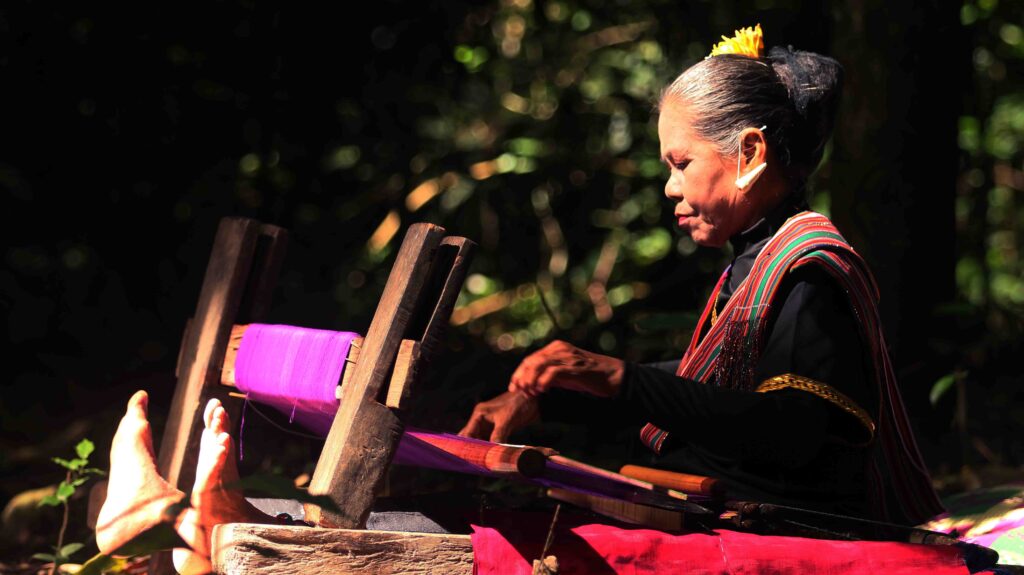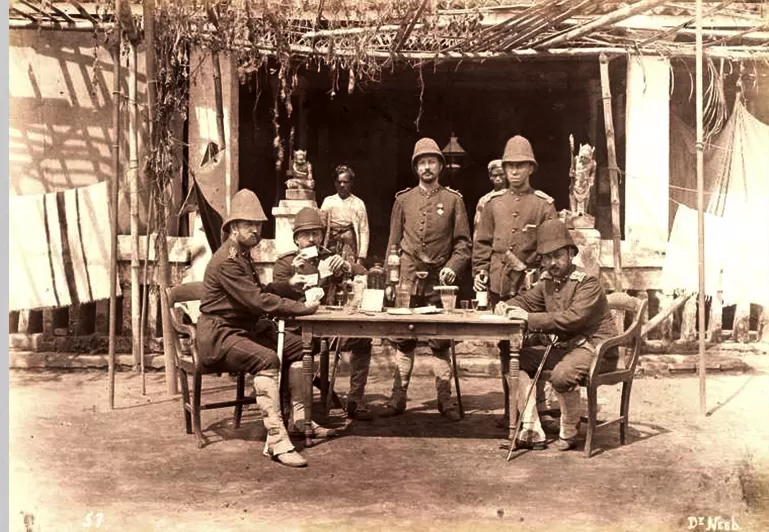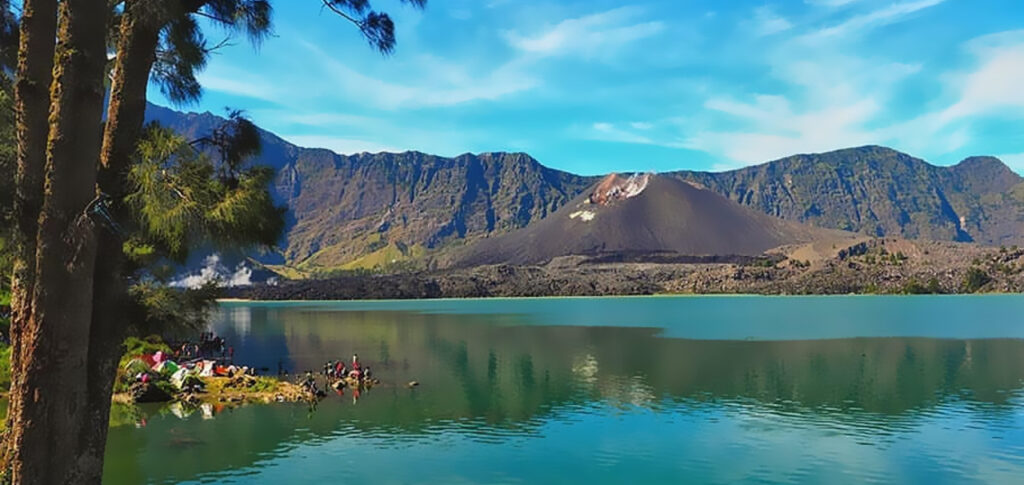The History of Mount Rinjani: A Journey Through Time
The History of Mount Rinjani, an active volcano located on the island of Lombok in Indonesia, stands as a majestic symbol of the island’s natural beauty and geological significance. With its impressive height of 3,726 meters, it is the second highest volcano in Indonesia.

Beyond its towering presence, the history of Mount Rinjani is rich and multifaceted, encompassing geological evolution, cultural significance, and modern-day tourism development. This article delves into the captivating history of Mount Rinjani, offering a comprehensive look at its past and present.
History of Mount Rinjani: Geological Origins and Evolution

Mount Rinjani’s story begins millions of years ago, during the Pleistocene epoch. Like many volcanic structures, Rinjani was formed through a series of eruptions and tectonic movements. Its creation is attributed to the subduction of the Indo-Australian plate beneath the Eurasian plate, a process that is responsible for much of the volcanic activity in Indonesia. The initial eruptions laid the groundwork for what would become one of the most iconic volcanoes in Southeast Asia.
Over time, the volcano went through numerous phases of activity, each shaping its current form. The most significant event in its geological history occurred approximately 125,000 years ago when a colossal eruption led to the formation of the Segara Anak caldera. This caldera, which is around 6 kilometers wide, is now filled with a crescent-shaped lake that is 200 meters deep. The lake, Segara Anak (meaning “Child of the Sea”), is one of Rinjani’s most distinguishing features and holds both geological and cultural importance.
History of Mount Rinjani: Cultural Significance

The history of Mount Rinjani is deeply intertwined with the cultural and spiritual life of the local Sasak and Balinese people. For centuries, the volcano has been revered as a sacred site. The indigenous Sasak people, who are the largest ethnic group on Lombok, regard Rinjani as a dwelling place of gods and spirits. Rituals and ceremonies are regularly conducted on the mountain to honor these spiritual entities and seek blessings.
One of the most notable cultural practices associated with Mount Rinjani is the annual pilgrimage known as “Mulang Pakelem.” This ceremony involves the offering of gold, silver, and other valuables into the waters of Segara Anak. The Balinese Hindus, who migrated to Lombok during the Majapahit Empire, perform this ritual to appease the mountain’s spirits and ensure the prosperity and safety of the community. This tradition highlights the deep-rooted respect and veneration that the local people have for Mount Rinjani.
History of Mount Rinjani: Colonial Era and Early Exploration

The history of Mount Rinjani took a significant turn during the colonial era. The Dutch East Indies, which ruled Indonesia for over three centuries, saw the first recorded European exploration of the mountain. In the early 19th century, the Dutch conducted expeditions to study the geology and biodiversity of the region. These early explorations were motivated by scientific curiosity as well as the desire to map and exploit the natural resources of the colony.
One of the pioneering figures in the exploration of Mount Rinjani was the German-Dutch botanist and explorer, Carl Ludwig Blume. In 1821, Blume embarked on an expedition to the volcano, documenting the diverse flora and fauna of the region. His work provided valuable insights into the unique ecosystems of Mount Rinjani and laid the foundation for future scientific research.
Modern-Day Exploration and Tourism

The 20th century marked a new era in the history of Mount Rinjani, characterized by increased accessibility and the rise of tourism. As Indonesia gained independence in 1945, the focus shifted towards developing the country’s natural attractions to boost tourism and stimulate the economy. Mount Rinjani, with its breathtaking landscapes and challenging trekking routes, emerged as a prime destination for adventurers and nature enthusiasts.
In 1997, the Mount Rinjani National Park was established, encompassing an area of approximately 41,330 hectares. The park was created to preserve the unique biodiversity and natural beauty of the volcano while promoting sustainable tourism. Today, the park attracts thousands of visitors annually, offering a range of activities including trekking, camping, and wildlife observation.
The Rinjani Trek, which takes trekkers to the summit of the volcano, is considered one of the most challenging and rewarding hikes in Southeast Asia. The journey typically begins in the villages of Sembalun or Senaru and involves a multi-day trek through lush forests, savannahs, and rugged terrains. The ascent to the summit provides panoramic views of the surrounding islands and, on clear days, even glimpses of Mount Agung on Bali and Mount Tambora on Sumbawa.
Volcanic Activity and Environmental Impact

Mount Rinjani’s active status means that it continues to shape its own history through periodic eruptions. The most recent significant eruption occurred in 2016, which caused temporary closures of the national park and affected local communities. These eruptions, while disruptive, also contribute to the fertility of the surrounding lands, supporting agriculture and sustaining local livelihoods.
The environmental impact of tourism has become a growing concern in recent years. The increasing number of visitors has led to issues such as waste management, habitat disruption, and erosion. To address these challenges, the Mount Rinjani National Park Authority, along with various non-governmental organizations, has implemented measures to promote eco-friendly practices. These include waste reduction campaigns, the construction of proper waste disposal facilities, and the promotion of responsible trekking guidelines.
Conservation Efforts and Sustainable Tourism
The future of Mount Rinjani depends on balancing the needs of tourism with environmental conservation. Sustainable tourism initiatives aim to minimize the ecological footprint of visitors while ensuring that local communities benefit economically. Programs that involve local guides and porters not only create job opportunities but also foster a sense of stewardship among the residents.
Conservation efforts are also focused on protecting the unique flora and fauna of the region. The forests around Mount Rinjani are home to several endemic species, including the Rinjani scops owl and various rare orchids. Preservation of these habitats is crucial for maintaining the biodiversity that makes Mount Rinjani a valuable ecological site.
Conclusion
The history of Mount Rinjani is a testament to the dynamic interplay between nature and human culture. From its geological origins to its spiritual significance and its role as a modern tourist destination, Rinjani continues to captivate the hearts and minds of those who encounter it. As we look to the future, the challenge lies in preserving this natural wonder for generations to come, ensuring that its history continues to unfold in harmony with the environment and the people who cherish it.
For those seeking adventure, spiritual solace, or a connection with nature, Mount Rinjani offers an unparalleled experience. Its history is not just a record of the past but a living narrative that evolves with each visitor who treads its paths. Whether you are a seasoned trekker or a curious explorer, the history of Mount Rinjani invites you to become a part of its ongoing story.
